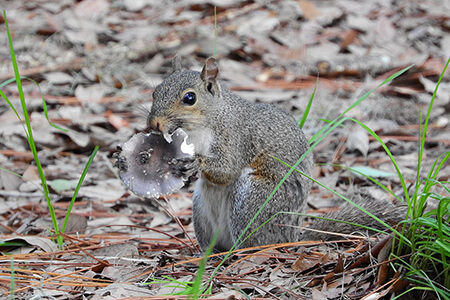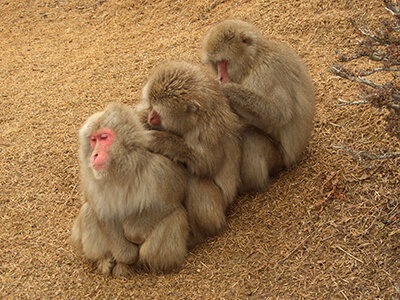This is a lesson summary. The full lesson can be viewed by purchasing an online course subscription.
Learning Objective
In this lesson we will learn about different types of interactions that occur between organisms.
Learning Outcomes
By the end of this lesson you will be able to:
- Distinguish between intraspecific and interspecific interactions.
- Describe predation, herbivory and competition, with examples.
- Define ‘symbiosis’.
- Differentiate between mutualism, commensalism and parasitism, with examples.
- Discuss how the different types of interactions affect the organisms involved.

(Image: Maky.Orel, Wikimedia Commons)
Lesson Summary
- Interactions between organisms of the same species are called intraspecific interactions.
- Interactions between organisms of different species are called interspecific interactions.
- Ecological interactions can have positive (+), negative (–) or neutral (0) outcomes for the organisms involved.
- The main types of ecological interactions are:
- Predation and herbivory
- Competition
- Symbiosis, including mutualism, commensalism and parasitism.
- Predation involves an animal (the predator) killing and eating another animal (the prey).
- Herbivory involves an animal feeding on a plant.
- Predation and herbivory both have positive consequences for one organism at the expense of the other.
- Therefore, they can be represented as +/–.
- Competition involves two organisms vying for the same resource.
- Competition has negative consequences for both organisms involved.
- Therefore, it can be represented as –/–.
- Symbiosis refers to any close, long-term association between organisms of different species.
- Symbiosis always benefits at least one of the organism involved.
- There are three main types of symbiosis, which differ in their consequences for the second organism involved.
- Mutualism is a symbiosis that has positive consequences for both organisms.
- It can be represented as +/+.
- Commensalism is a symbiosis that has positive consequences for one organism while the other organism is unaffected.
- It can be represented as +/0.
- Parasitism is a symbiosis that has positive consequences for one organism (the parasite) at the expense of the other (the host).
- It can be represented as +/–.

(Image: Noneotuho, Wikimedia Commons)
(Header image: JGS2584, Adobe Stock)
